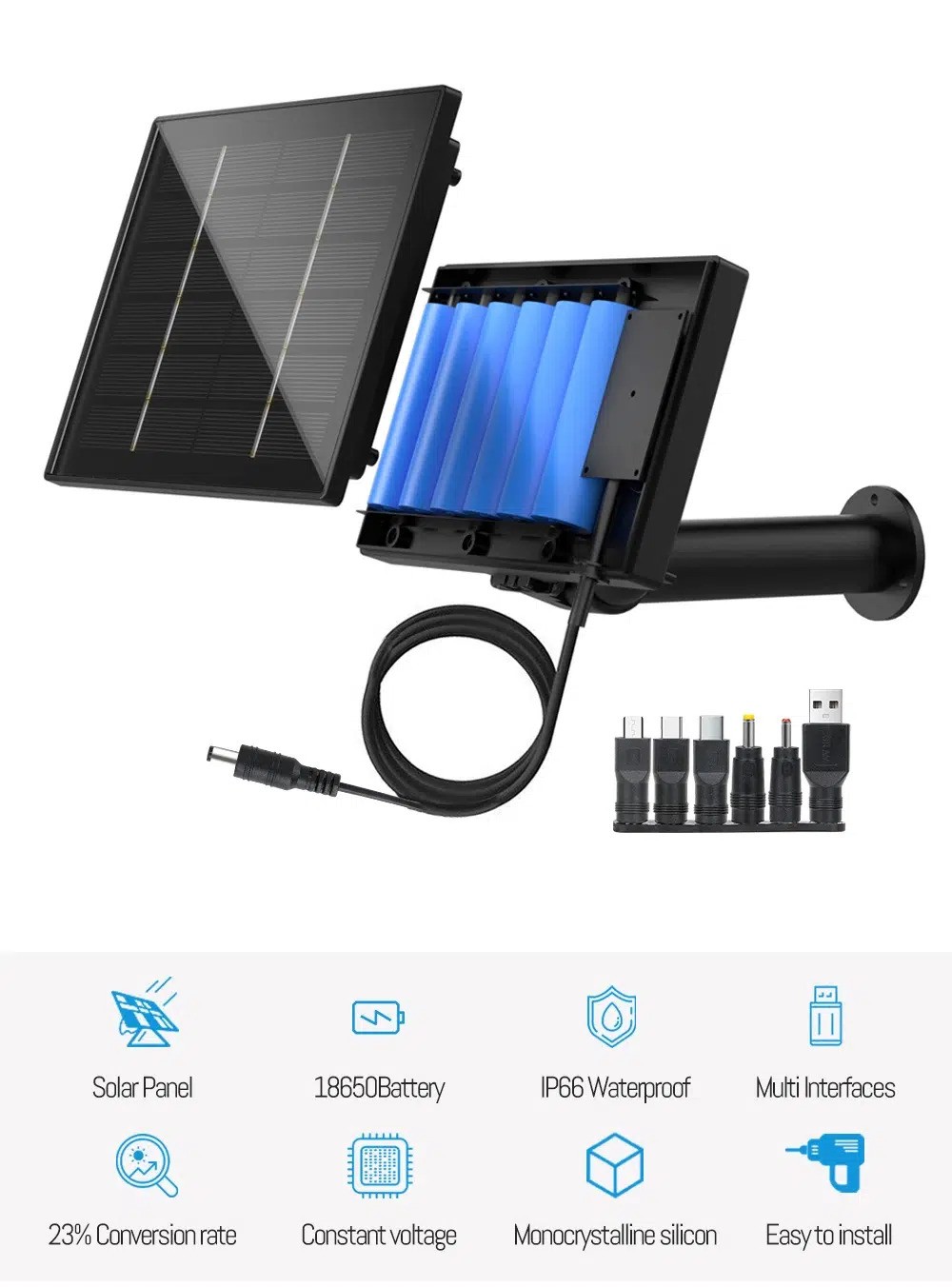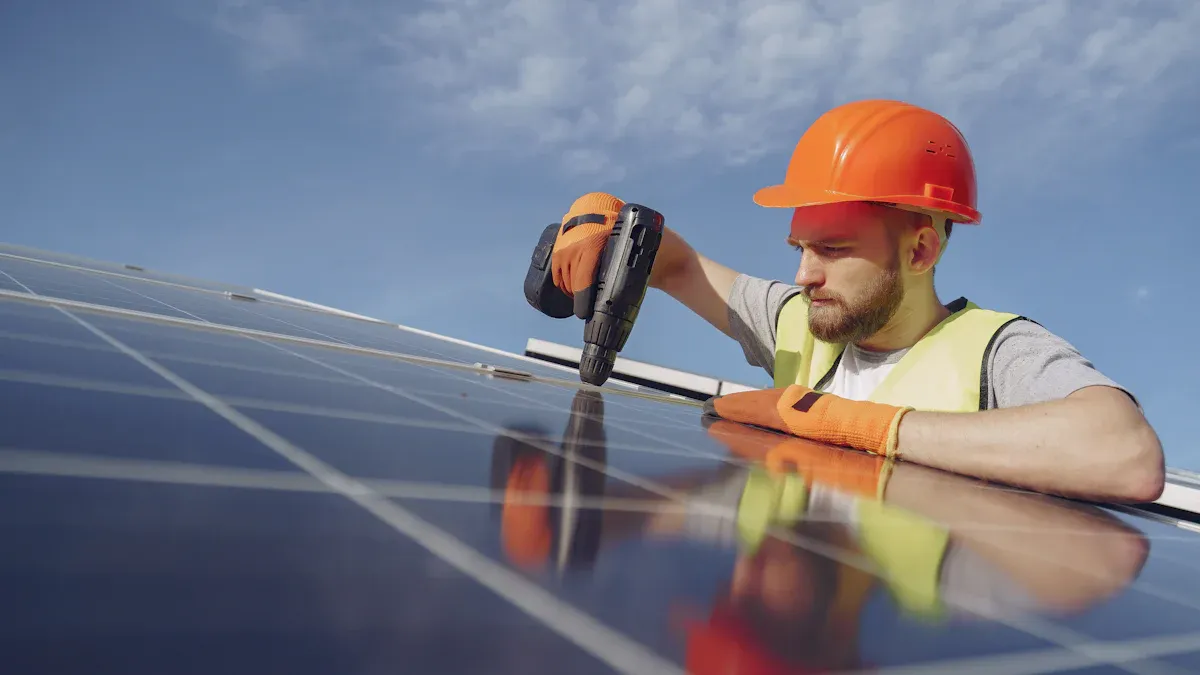+86 17727759177
inbox@terli.net
- All
- Product Name
- Product Keyword
- Product Model
- Product Summary
- Product Description
- Multi Field Search
Views: 0 Author: Site Editor Publish Time: 2025-10-21 Origin: Site
You want a solar panel that works well and is easy to set up. The pv-s150 is special because it gives a lot of power and uses new materials. This panel is made to last a long time and be dependable.
High power output
Strong efficiency rating
Small size for easy placement
You can set up the pv-s150 fast because it is simple to use and the instructions are easy to follow.
The PV-S150 solar panel can make up to 10kW of power. It has an efficiency rating of 21.5%. This makes it good for many solar projects. Its small size makes it easy to put on roofs, walls, or the ground. You can place it in many different spots. Cleaning the panel every 6 to 12 months is important. This helps keep it working well and makes it last longer. The panel has a 12-year warranty for its materials. It also has a 25-year guarantee for how well it works. This helps users feel safe about their purchase. You need to install the panel the right way. You should also test it often with tools like the Seaward PV150 tester. This keeps the solar panel safe and working its best.
You get strong power from the pv-s150. This panel gives you a maximum DC capacity of 10kW. The open circuit voltage reaches 1000V DC. The short circuit current is 15A. These numbers mean you can use the pv-s150 for many types of solar projects, from homes to small businesses. You can trust the output to stay steady, even when the weather changes.
Tip: High output panels like this help you run more devices at the same time.
The pv-s150 uses advanced cell technology. You get an efficiency rating of 21.5%. This means the panel turns more sunlight into usable electricity. You save space because you need fewer panels to reach your energy goals. High efficiency also helps you get more power during cloudy days.
| Feature | Value |
|---|---|
| Efficiency | 21.5% |
| Max Output | 10kW |
| Voltage | 1000V DC |
You can fit the pv-s150 in many places because of its compact size. The panel measures 1,650mm long, 990mm wide, and 35mm thick. The weight is only 18kg. You can lift and move it without much effort. The slim design lets you install it on roofs, walls, or ground mounts.
The pv-s150 uses strong and modern materials. The frame is made from anodized aluminum. This keeps the panel light but tough. The front glass is tempered and anti-reflective. It protects the solar cells from hail, dust, and rain. The back sheet resists UV rays and moisture. You get a panel that lasts for years, even in harsh weather.

You get peace of mind with the pv-s150 warranty. The product comes with a 12-year materials and workmanship warranty. There is also a 25-year performance guarantee. This means your panel will keep working well for a long time. If you have any problems, you can get support or a replacement.
Note: The pv-s150 meets IEC 61215 and IEC 61730 standards. It also has TUV and UL certifications. These show the panel is safe and reliable.
You want a solar panel that works well for many years. The pv-s150 gives steady energy, even if the weather changes. You can trust it because it has a smart design and strong parts. Solar panels can have problems like cell degradation or short circuits. The pv-s150 uses different ways to stop these problems. For example, regular checks and watching the system help stop cell degradation. Good installation lowers the chance of short-circuited cells. The maker also adds extra contact points and does checks to find problems early.
| Failure Mode | Mitigation Strategy |
|---|---|
| Degradation of solar cells | Regular maintenance and monitoring systems |
| Short-circuited cells | Proper installation practices |
| Open-circuited cells | Use of redundant contact points |
| Interconnect failures | Regular inspections for thermal stress |
| Module failures | Manufacturer's warranty and timely detection |
| Hot-spot failures | Keeping junction temperatures below 128°C |
| By-pass diode failure | Ensuring proper sizing of diodes |
| Encapsulant failure | Regular checks for moisture and bond strength |
You can feel sure that the pv-s150 has built-in ways to protect against many common problems.
You need a panel that can handle tough weather. The pv-s150 goes through many tests before you get it. These tests include temperature cycling, damp heat, and UV exposure. The panel faces hot and cold cycles to see if it can handle quick weather changes. Fast life testing shows how it will work after many years. These tests prove the pv-s150 can last for a long time, even in hard places.
UV exposure tests show how sunlight affects the panel.
Damp heat tests show how the panel works in wet air.
Temperature cycling proves the panel can handle hot and cold.
You may want to know how the pv-s150 compares to other panels. Many panels lose power or break in bad weather. The pv-s150 is different because it passes hard tests for reliability and strength. Labs have tested it in tough places, and it keeps working well. You get a panel that lasts longer and needs less fixing than most others.
When you pick the pv-s150, you get a solar panel that works well and gives you peace of mind.

You start by choosing the best spot for your solar panel. Pick a place that gets sunlight most of the day. Make sure there are no trees or buildings blocking the sun. The ground or roof should be strong and flat. Clean the area before you begin. Remove any dirt, leaves, or debris. This helps you set up the pv-s150 safely and keeps it working well.
Tip: Use a compass or a solar pathfinder to check the sun’s path and find the best angle for your panel.
You need to mount the panel so it stays secure in all weather. Use the right mounting kit for your roof or ground type. Follow these steps:
Place the mounting rails on your chosen surface.
Attach the rails tightly using bolts or screws.
Set the pv-s150 on the rails.
Secure the panel with clamps or brackets.
Check that the panel faces the sun at the right angle. A tilt between 15° and 40° works well in most places. Make sure the panel does not move or shake.
You connect the wires after mounting the panel. Use cables that match the voltage and current of the pv-s150. Connect the positive and negative wires to the right terminals. Use waterproof connectors to stop water from getting in. Run the wires neatly to the inverter or charge controller. Label each wire so you know where it goes.
Always turn off the power before you touch any wires.
You must stay safe when you install solar panels. Personal protective equipment (PPE) protects you from shocks, falls, and burns. Wear the right gear every time you work with solar panels.
Class E hard hat rated for electrical work
Insulated gloves rated for at least 1000V AC
Safety glasses with side shields
Specialized arc-rated face shields
Non-conductive safety boots with electrical hazard ratings
Flame-resistant and arc-rated outer clothing
Tools with insulated handles
Properly rated voltage tester and electrical safety mat
PPE keeps you safe from many dangers on the job. It helps you avoid injuries from electricity and sharp tools.
You keep your panel working well by cleaning and checking it often. Clean the pv-s150 every 6 to 12 months. Use water and a soft brush to remove dust and dirt. In dry or dusty places, you may need to clean it more often. Regular cleaning stops dirt from blocking sunlight and keeps your panel efficient.
Clean every 6-12 months
Check for leaves, bird droppings, or snow
Inspect for cracks or loose wires
In dusty areas, clean more often
Keeping your panel clean also helps it last longer. Dirt and debris can scratch the glass or cause damage if left too long.
After you finish the installation, you need to test the system. The Seaward PV150 tester helps you check the electrical safety and performance of your solar panel. This device lets you test the system while it is energized. You can also store up to 200 test results for your records. The PV150 tester checks the voltage, current, and insulation of your panel. It also measures sunlight and temperature to make sure your panel works at its best.
| Feature | Description |
|---|---|
| Electrical Safety Verification | The PV150 checks the safety of your solar installation. |
| Performance Testing | It tests how well your solar panel works after setup. |
| Data Storage | You can save up to 200 test results for later review. |
| Safe Testing | The tester lets you check panels while they are still connected. |
| Environmental Measurements | It measures sunlight, air temperature, and panel temperature wirelessly. |
Note: Always test your system after installation. This helps you find problems early and keeps your solar panel safe and efficient.
You get strong benefits when you choose the pv-s150. This panel gives you high power, smart efficiency, and a tough build. You can trust it to work well in many places. Remember to clean your panel and test it after installation. If you want a solar panel that lasts and performs, this is a smart choice.
Tip: Check your panel often to keep it working at its best.
You can use water and a soft brush. Clean the panel every 6 to 12 months. Remove dust, leaves, or bird droppings. Avoid harsh chemicals. Cleaning helps your panel work better.
You can install the pv-s150 on most roof types, including metal, tile, and asphalt. Use the correct mounting kit for your roof. Always check that your roof is strong enough to hold the panel.
First, check for dirt or shade on the panel. Inspect the wiring for loose connections. Use the Seaward PV150 tester to check performance. If you still see low output, contact customer support.
Yes, the pv-s150 works in cold and snowy weather. The panel has a tough frame and glass. Snow may lower output if it covers the panel. Clear snow off to keep getting power.
PV Panel Specifications: Understanding Solar Panel Technical Parameters
How to Calculate PV Panel Efficiency: Step-by-Step Guide with Formulas and Examples
Comprehensive Guide to Fire Safety in Photovoltaic Systems: Prevention, Risks, and Best Practices
Understanding PV Module Temperature Thresholds: The Critical 85°C Benchmark for Fire Safety
PV Professional's Technical Analysis: Optimizing Polycrystalline Panel Installation and Maintenance
Integrating Polycrystalline Panels in PV Carport Structures: Design Considerations and Benefits
Choosing the Right PV Backsheet Materials to Minimize Cleaning Needs and Maximize Performance